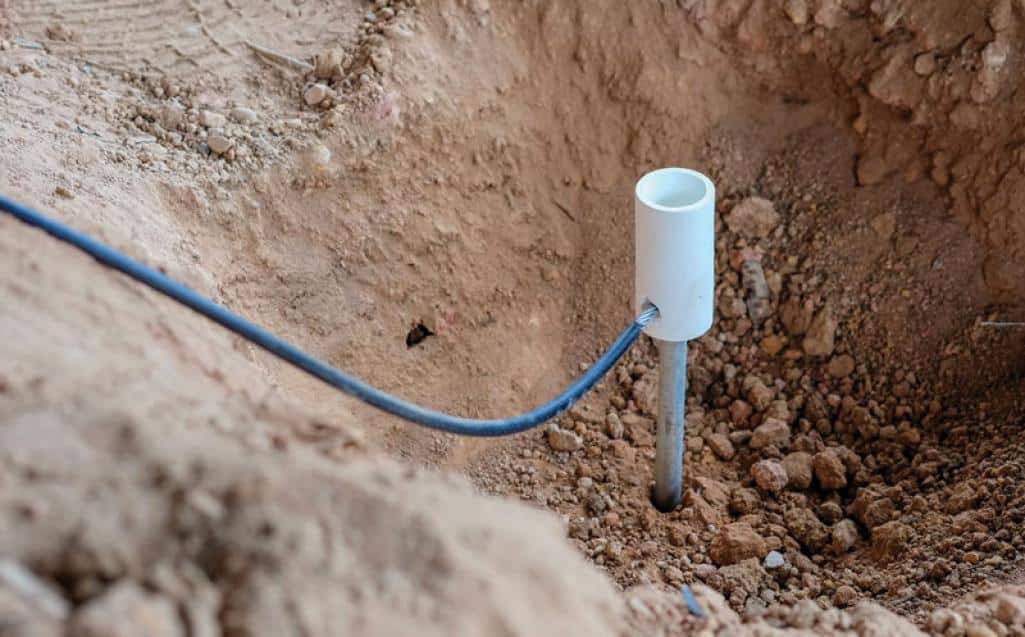
-
“He was efficient; he could give you a good quote about various possibilities and was open to questioning.” - Thomas

DOES YOUR GENERATOR NEED TO BE GROUNDED?
To begin with, if you choose to have a standby generator permanently installed, you’ll need a professional to obtain the necessary permits and carry out the installation. And since all standby generators must adhere to local laws and/or the National Electric Code, they will be the ones to ground it.
In general, portable generators don’t need to be grounded if you’re using them to power appliances, tools, or other items by plugging them straight into the conventional ports on the front of the generator. Maybe, if the generator is used to supply electricity to certain residential circuits. Your local building authority should always be consulted regarding the operator’s manual, a licensed electrician, and/or township ordinances as some localities may have standards that are different from those set forth in the NEC (National Electric Code).
To operate electrical equipment safely, electrical circuits must be grounded. This ensures that any faulted or shorted current is directed to the ground, which is the actual, literal earth, rather than the user, who would then act as the conduit to “ground.” Generators can be grounded in one of two ways: neutrally bonded or neutrally floating. The term “neutral bonded” refers to the connection between the generator frame and the neutral wire. The neutral is not attached to the frame when there is a floating neutral. In the latter scenario, a grounding rod that has been driven into the ground should be connected to the ground terminal of the generator.
When used to power circuits in your home, generators with GFCI (Ground Fault Circuit Interrupter) outlets need to be grounded by attaching the ground terminal to a ground rod that has been pushed into the ground. Three pole transfer switches are another name for neutral switching transfer switches.

Additional terms and conditions may apply, call for details. Valid from Jun 1, 2024 - Dec 31, 2024
How to Maintain Your Generator
You must properly maintain your generator if you want it to be ready to use when the power grid fails. Taking care of your generator should be covered in depth in the manual, however there are several fundamental precautions that everyone should do.
- Have Enough Fuel: For a generator to run continuously for 24 hours, 12 to 20 gallons of gasoline are required. That equates to roughly 16 to 28 gallons of propane because propane has a gallon energy content that is 0.73 times greater than that of gasoline. You probably don’t need to operate your generator constantly, though. It might just need to be turned on once every few hours to keep your freezer and fridge running. Food will normally stay cold in an unopened refrigerator for about four hours and in an unopened, fully-stocked freezer for about two days, according to the U.S. Food and Drug Administration. Propane can be kept for an endless period of time, but gasoline must be brand-new for the generator to function properly. Experts advise adding a fuel stabiliser, which extends the shelf life of gasoline in cans by up to a year. Additionally, by doing this, you can avoid draining the generator’s fuel tank after use.
- Check the Oil: Before you turn on your generator, ensure sure it has enough oil to prevent damage. But take care not to fill it up too much. Just enough oil should be added to reach the full mark on the dipstick.
- Change the Oil: After five hours of operation the first time you use your generator, change the oil. Then, it ought to be able to go for roughly 100 hours without an oil change. You may find out what kind of oil to use by consulting your owner’s manual.
- Check the Filters: Check the filters after each use of the generator. Change the paper filters if they are clearly dirty. Or clean foam ones that have been washed. As instructed in the handbook, let them dry before lubricating them with foam filter oil. If the fuel tank of your generator has a filter cup, clean it by tapping out any debris and cleaning it with a clean rag. Finally, the fuel pipe of certain generators has a gasoline filter fitted. To learn when and how to modify this filter, consult the manual.
- Check the Spark Plug: Spark plugs for generators typically need to be changed after a specific number of operating hours; this information should be provided in the manual. If your generator doesn’t have an hour indicator, keep track of how many hours it has ran so you’ll know when to replace it.
- Run It Dry: Before putting your generator away, drain the gasoline lines if you anticipate leaving it idle for at least two weeks. Turn off the gasoline valve while the engine is running and let it run out to do this. This keeps the lines and carburetor clean and stops leaks by clearing the fuel from them.
- Run It Regularly: Start your generator once a month and let it run for roughly 20 minutes. In addition to lubricating the engine and recharging the battery, it burns off moisture. Consider performing a test run with the generator connected to the transfer switch every few months to make sure it can power all you require.
- Store It Properly: Never store your generator outside after using it. Instead, keep it inside a garage or shed where it will be sheltered from the elements.
8 GENERATOR SAFETY Tips
There is no need for additional safety measures when a standby generator is installed correctly.
In contrast, the three primary safety risks associated with portable generators are fire, electric shock, and carbon monoxide poisoning. Always adhere to the directions in the manual to the letter to avoid these risks. Here are some general safety recommendations to bear in mind:
- Never Run the Generator Indoors: Always use the generator outside, in a well-ventilated area, to avoid CO poisoning. The amount of carbon monoxide that can build up in even a partially enclosed room, like an open garage door, is enough to be fatal. Keep the generator well away from any doors, windows, or vents that could let in fumes, and at least 20 feet away from the house.
- Use a CO Detector: Install battery-operated CO detectors on every floor of your home if your generator doesn’t include an automatic CO detector to further lower the risk of CO poisoning. To ensure sure the batteries are functional, test them frequently. Get outside or close to an open door or window as soon as the CO alarm sounds.
- Keep the Generator Dry: You risk electrocution if you use a generator in damp weather. Use an open, canopy-like structure to cover it if you must use it in the rain, such as a tarp raised on poles. A home center may also sell a ventilated generator tent that has been carefully made.
- Use the Proper Power Cords: Ensure that you are properly connecting your appliances to the generator if you don’t have a transfer switch. Use heavy-duty extension cords made for outdoor use or plug them in directly. Make that the cord has a three-prong plug, is in good condition, and has no rips or tears. Additionally, be sure the extension cord’s amp or watt rating is at least equal to the combined wattage of all the appliances you are connecting to it.
- Never Back-Feed: Back-feeding is the risky practice of plugging a generator straight into a power outlet in your house. You run the risk of damaging your electronic equipment or, worse, igniting an electrical fire because it bypasses the circuit board in your home. Back-feeding increases the risk of electrocution for both utility workers and nearby residents who utilize the same power transformer.
- Avoid Overloading the Generator: Even if your generator is correctly connected, overloading it might still lead to overheating or generator failure. Keep an eye on how many appliances you’re operating at once to prevent this issue, and don’t use more electricity than the generator is capable of producing. According to Consumer Reports, the majority of transfer switches assist with this by showing the current consumption.
- Cool It Down Before Refueling: Never attempt to refuel a generator while it’s running. If you spill gasoline on a hot engine, it could start a fire. Turn the generator off and give it time to cool down before adding gas. That also reduces your risk of burning yourself on the hot engine.
- Store Fuel Safely: Use only the fuel that your generator specifies. In a cool, well-ventilated room, keep additional fuel in a safety can that has been authorized. Do not store extra fuel in or next to a fuel-burning appliance, such as a natural gas water heater in the garage, or in the living areas of your home. Instead, put it in a lockable storage space. To learn how much gasoline you can keep on your property and where it can go, speak with your neighborhood fire department.

Contact Airplus Today
Servicing All BrandsOur team is here to answer your questions. Contact us today at (571) 470-7235 or complete the form below.
.2309121422550.png)


